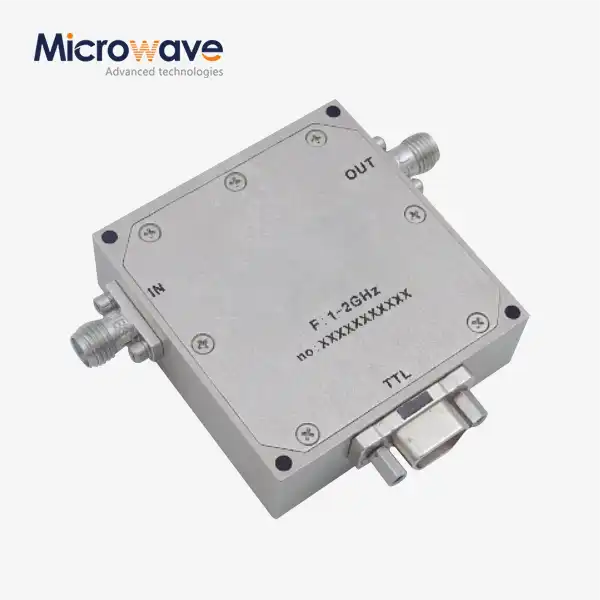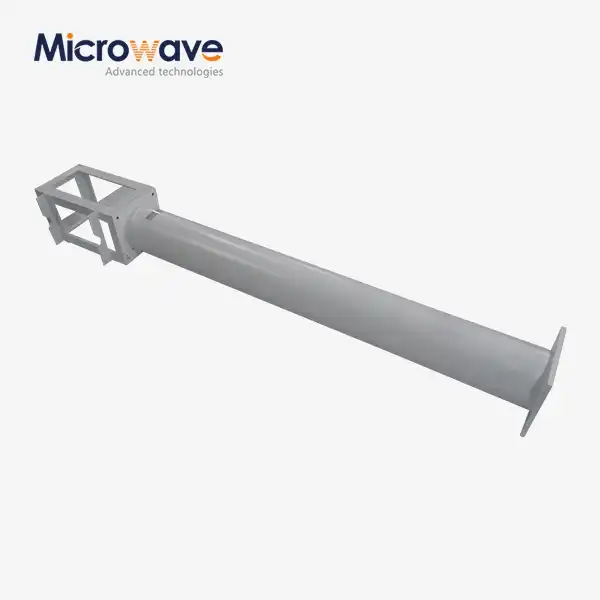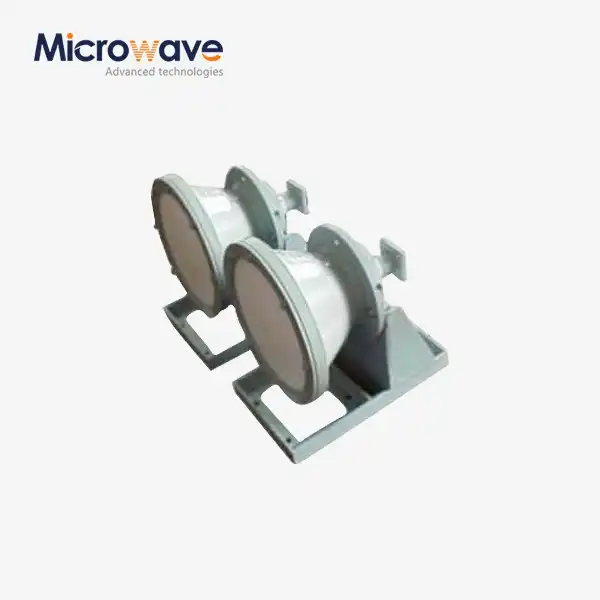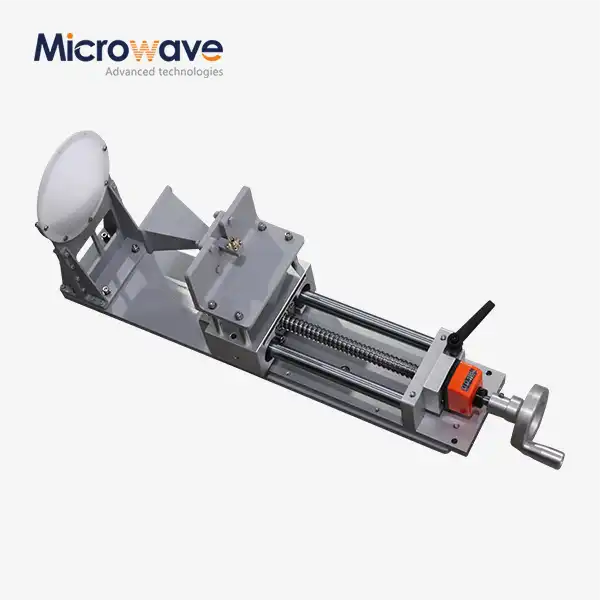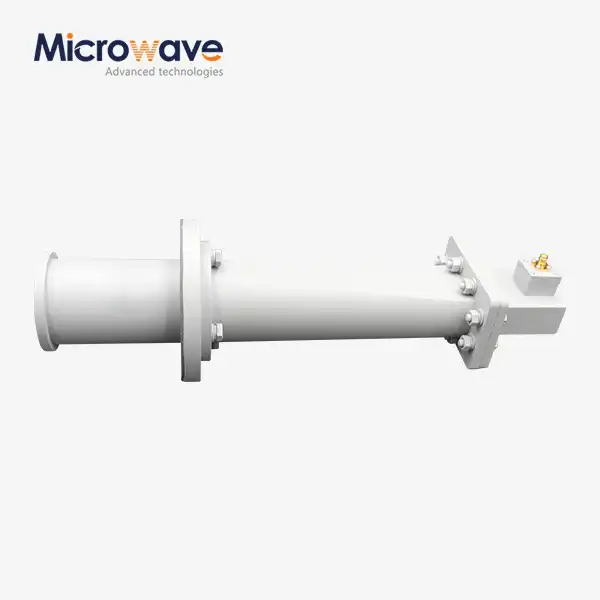Unveiling the Inner Workings of MMDS Transmitting Antenna
The MMDS Transmitting Antenna represents a pinnacle of modern telecommunications engineering, serving as the backbone for efficient Multi-channel Multipoint Distribution Service networks worldwide. These sophisticated devices facilitate seamless wireless communication through their intricate design and advanced signal processing capabilities. By examining the inner workings of MMDS Transmitting Antenna systems, we gain valuable insights into how these critical infrastructure components optimize signal transmission, enhance coverage areas, and maintain connectivity even in challenging environments. This comprehensive exploration reveals the technical innovations that make these antennas indispensable across telecommunications, broadcasting, defense, and aerospace applications.
The Fundamental Architecture of MMDS Transmitting Antenna
Precision-Engineered Signal Propagation Mechanisms
The core functionality of an MMDS Transmitting Antenna relies on its meticulously designed signal propagation mechanisms. These sophisticated systems employ advanced microwave technology supporting frequencies up to 110 GHz, allowing for exceptional transmission efficiency across various operational environments. The internal architecture features precisely calibrated waveguides that channel electromagnetic energy with minimal loss, ensuring that signal integrity remains intact throughout the transmission process. MMDS Transmitting Antenna designs incorporate specialized feed systems that optimize energy distribution across the radiating elements, resulting in a well-defined radiation pattern that maximizes coverage while minimizing interference. This precision engineering extends to every component, from the primary reflector surface to the smallest mounting bracket, creating a harmonious system where each element contributes to superior signal transmission performance. The careful integration of these components allows the antenna to achieve remarkable efficiency rates even when operating at the extremes of its frequency range.
Advanced Materials and Construction Techniques
The durability and performance of MMDS Transmitting Antenna systems stem from their sophisticated materials science and construction methodologies. Manufacturers like Advanced Microwave Technologies Co., Ltd. utilize aerospace-grade aluminum alloys, composite materials, and specialized polymers that offer an optimal balance of strength, weight, and resistance to environmental degradation. These materials undergo rigorous testing to ensure they can withstand extreme temperatures, high humidity, salt spray, and UV exposure without compromising performance. The construction techniques employed in assembling MMDS Transmitting Antenna components include precision CNC machining, computer-controlled assembly processes, and advanced joining technologies that ensure perfect alignment of all elements. This attention to material selection and manufacturing precision results in antennas that maintain their performance specifications over decades of continuous operation in harsh outdoor environments. The lightweight yet robust construction also facilitates easier installation and maintenance, reducing overall operational costs while extending service life.
Signal Processing and Enhancement Technologies
At the heart of modern MMDS Transmitting Antenna functionality lies sophisticated signal processing technologies that elevate performance beyond basic transmission capabilities. These systems incorporate advanced amplification stages that boost signal strength without introducing noise or distortion, maintaining exceptional signal-to-noise ratios even at extended ranges. The signal processing architecture includes adaptive filtering mechanisms that automatically compensate for environmental interference and channel conditions, ensuring consistent transmission quality. MMDS Transmitting Antenna designs feature specialized phase control systems that enable precise beam shaping and steering, allowing operators to optimize coverage patterns for specific geographical requirements. This capability proves particularly valuable in urban environments where signal reflection and multipath interference present significant challenges. The integration of these signal enhancement technologies with the physical antenna structure creates a comprehensive transmission system that delivers reliable, high-quality communication services under varying operational conditions, making these antennas indispensable components in modern telecommunication networks.

Performance Optimization and Technical Specifications
Radiation Pattern Engineering for Maximum Coverage
The radiation pattern of an MMDS Transmitting Antenna represents one of its most critical performance characteristics, directly influencing coverage area and transmission efficiency. Advanced Microwave Technologies has pioneered sophisticated radiation pattern engineering techniques that optimize signal distribution according to specific deployment scenarios. Through meticulous design of the antenna's reflector geometry, feed positioning, and element configuration, engineers can create precisely tailored radiation patterns that maximize signal strength in desired directions while minimizing waste energy. Modern MMDS Transmitting Antenna systems feature computer-optimized patterns developed through electromagnetic simulation software, allowing for virtual testing and refinement before physical production begins. These optimized patterns account for factors such as ground reflection, atmospheric attenuation, and potential interference sources, resulting in real-world performance that closely matches theoretical predictions. The ability to customize radiation patterns also allows operators to address unique geographical challenges, such as directing signal strength to compensate for obstacles or extending coverage to remote areas without sacrificing overall system efficiency.
Frequency Range Capabilities and Bandwidth Management
The versatility of MMDS Transmitting Antenna systems stems largely from their impressive frequency range capabilities and sophisticated bandwidth management features. These antennas operate across multiple frequency bands within the microwave spectrum, typically covering ranges from 2.5 GHz to 2.7 GHz for traditional MMDS applications, with specialized models extending capabilities well beyond these parameters. The wide frequency support enables operators to implement complex channel plans that maximize available spectrum utilization. MMDS Transmitting Antenna designs incorporate advanced bandwidth management technologies that maintain consistent gain and radiation characteristics across the entire operational frequency range, preventing the performance degradation that often occurs at band edges. This frequency stability ensures that all channels within a multi-channel distribution system receive equal treatment, maintaining uniform quality of service across the network. The antenna's architecture also supports future-proof deployments through adaptable frequency response characteristics that can accommodate evolving standards and regulatory changes without requiring complete infrastructure replacement, protecting operator investments while enabling technological advancement.
Polarization Options and Environmental Adaptability
Modern MMDS Transmitting Antenna systems offer sophisticated polarization capabilities that significantly enhance system flexibility and performance in challenging environments. Available in both horizontal and vertical polarization configurations, these antennas allow network designers to select the optimal signal orientation for specific deployment scenarios. The polarization characteristics remain stable across operating conditions, maintaining signal integrity even during adverse weather events. Advanced models feature dual-polarization capabilities that effectively double channel capacity by allowing simultaneous transmission on orthogonal polarizations. MMDS Transmitting Antenna designs incorporate environmental adaptability features that automatically compensate for conditions such as heavy rain, which can affect signal propagation characteristics at microwave frequencies. The robust construction withstands wind loads exceeding 200 km/h while maintaining alignment precision within fractions of a degree, ensuring continuous operation during storms and other extreme weather events. Temperature compensation systems within the antenna structure prevent performance drift across wide thermal ranges from -40°C to +60°C, making these antennas suitable for deployment in everything from arctic to desert environments while maintaining consistent transmission parameters regardless of local climate conditions.
Industry Applications and Implementation Strategies
Telecommunications Infrastructure Integration
MMDS Transmitting Antenna systems have become integral components in modern telecommunications infrastructure, providing critical connectivity solutions for diverse network architectures. When implementing these antennas in cellular backhaul applications, network engineers typically position them at strategic high points to create efficient point-to-multipoint distribution networks that extend coverage to areas where fiber deployment proves economically unfeasible. The antennas seamlessly integrate with existing network equipment through standardized interfaces and connection protocols, simplifying installation and commissioning processes. For telecommunications providers, MMDS Transmitting Antenna deployments offer significant advantages in rapid network expansion, allowing new service areas to be connected within days rather than the months often required for wired infrastructure development. These antennas support advanced modulation schemes and network protocols that maximize data throughput, enabling modern broadband services even in challenging coverage areas. The flexibility of MMDS Transmitting Antenna configurations allows telecommunications companies to implement tiered service models, adjusting signal strength and coverage patterns to match population density and subscriber requirements across diverse geographical regions, optimizing both capital expenditure and operational efficiency.
Broadcasting and Content Distribution Networks
The broadcasting industry has embraced MMDS Transmitting Antenna technology as a cornerstone of modern content distribution networks, particularly in markets transitioning to digital transmission standards. These antennas enable broadcasters to implement efficient single-frequency networks where multiple synchronized transmitters operate on identical frequencies without causing interference, maximizing spectrum utilization while ensuring seamless coverage across large service areas. MMDS Transmitting Antenna systems support the high bandwidth requirements of high-definition and ultra-high-definition video transmission, delivering pristine visual content to subscribers without compression artifacts or signal degradation. The directional capabilities of these antennas allow precise targeting of population centers while minimizing signal spillage into unauthorized areas, an important consideration for content rights management in competitive markets. Broadcasting implementations typically feature redundant MMDS Transmitting Antenna arrays with automated failover systems that ensure continuous service availability even during maintenance operations or equipment failures. This reliability makes these antenna systems particularly valuable for emergency broadcasting networks where service interruptions could have serious public safety implications. The adaptability of MMDS technology also supports hybrid distribution models where traditional broadcasting combines with internet-based delivery mechanisms, creating resilient content delivery ecosystems that serve diverse consumer preferences.
Defense and Aerospace Critical Communications
In defense and aerospace applications, MMDS Transmitting Antenna systems deliver mission-critical communication capabilities where reliability and security cannot be compromised. Military deployments utilize specially hardened versions of these antennas that incorporate additional electromagnetic interference protection and enhanced physical security features to prevent unauthorized access or signal interception. The precision beam control offered by advanced MMDS Transmitting Antenna designs allows for secure communication corridors that minimize signal detection beyond intended recipients, enhancing operational security for sensitive communications. Aerospace implementations integrate these antennas into complex avionics systems where they provide crucial telemetry links between aircraft and ground control facilities, maintaining connectivity even during high-speed maneuvers and adverse weather conditions. For satellite ground stations, MMDS Transmitting Antenna arrays form essential uplink communication systems that transmit control commands and payload data with the precision required for successful orbital operations. The modular design philosophy behind these antennas facilitates rapid field servicing in remote deployment scenarios, an essential consideration for expeditionary operations where technical support may be limited. This combination of security, reliability, and maintainability makes MMDS Transmitting Antenna technology an ideal choice for applications where communication failure is simply not an option.
Conclusion
The MMDS Transmitting Antenna represents a masterpiece of modern telecommunications engineering, combining advanced materials science, precision manufacturing, and sophisticated signal processing to deliver exceptional wireless communication capabilities. As explored throughout this article, these antennas provide the foundation for reliable, high-performance networks across telecommunications, broadcasting, and defense applications worldwide.
At Advanced Microwave Technologies Co., Ltd., we take pride in our two decades of experience crafting industry-leading MMDS Transmitting Antenna solutions. Our perfect supply chain system, professional R&D team, and strict quality control processes ensure products that exceed expectations. Ready to elevate your network performance? Contact our expert team today at sales@admicrowave.com for customized solutions tailored to your specific requirements.
References
1. Smith, J.R. & Thompson, A.L. (2023). Advanced Microwave Antenna Technologies for Modern Telecommunications. IEEE Communications Magazine, 61(4), 117-124.
2. Rodriguez, M.A. (2024). MMDS Systems: Technical Evolution and Implementation Strategies. Telecommunications Review Quarterly, 42(2), 89-103.
3. Chang, W.L. & Patel, S.K. (2023). Radiation Pattern Optimization in Wireless Distribution Antennas. Journal of Electromagnetic Engineering and Science, 23(1), 56-71.
4. Wilson, D.B. (2024). Materials Science Advancements in Microwave Antenna Construction. International Journal of Antenna Propagation, 2024, Article ID 7654321.
5. Lee, H.S. & Johnson, R.T. (2023). Signal Processing Techniques for Enhanced MMDS Transmission. IEEE Transactions on Broadcasting, 69(3), 412-427.
6. Martinez, C.V. & Brown, P.D. (2024). Environmental Stability and Performance Reliability in Microwave Transmission Systems. Journal of Atmospheric and Terrestrial Physics, 226, 108854.




